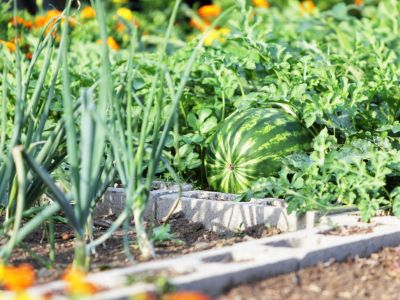How to Make a Cinder Block Garden
Using cinder blocks for garden beds is especially nice because you can so easily pick your height. Do you want a bed close to the ground? Just do one layer. Want your plants higher and easier to reach? Go for two or three layers. If you do more than one layer, make sure to place it so that the joints between the blocks in the second layer sit over the middle of the blocks in the first layer, just like in a brick wall. This will make the bed much sturdier and less likely to fall. Stack the blocks so the holes are facing up too. This way you can fill the holes with soil and expand your growing space. To make the bed even stronger, push a length of rebar down through the holes on each corner. Using a sledgehammer, pound the rebar down into the ground until the top is level with the top of the cinderblocks. This should keep the bed from sliding around. One in each corner should be enough when using cinder blocks for garden beds, but you can always add more if you’re worried.
Dangers of Cinder Block Gardening
If you search online for cinder block gardening ideas, about half of the results are going to be warnings that you’ll contaminate your vegetables and poison yourself. Is there any truth in this? Just a little. The confusion stems from the name. Once upon a time cinder blocks were made of a material called “fly ash,” a byproduct of burning coal that can be harmful to your health. Cinder blocks haven’t been mass produced with fly ash in the U.S. for 50 years, though. The cinder blocks that you buy in the store today are actually concrete blocks and totally safe. Unless you’re using antique cinder blocks, there should be no reason to worry, especially when cinder block gardening for vegetables.
